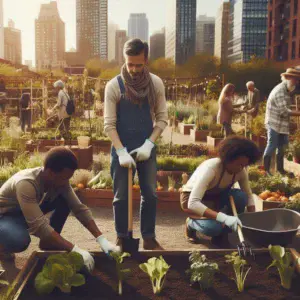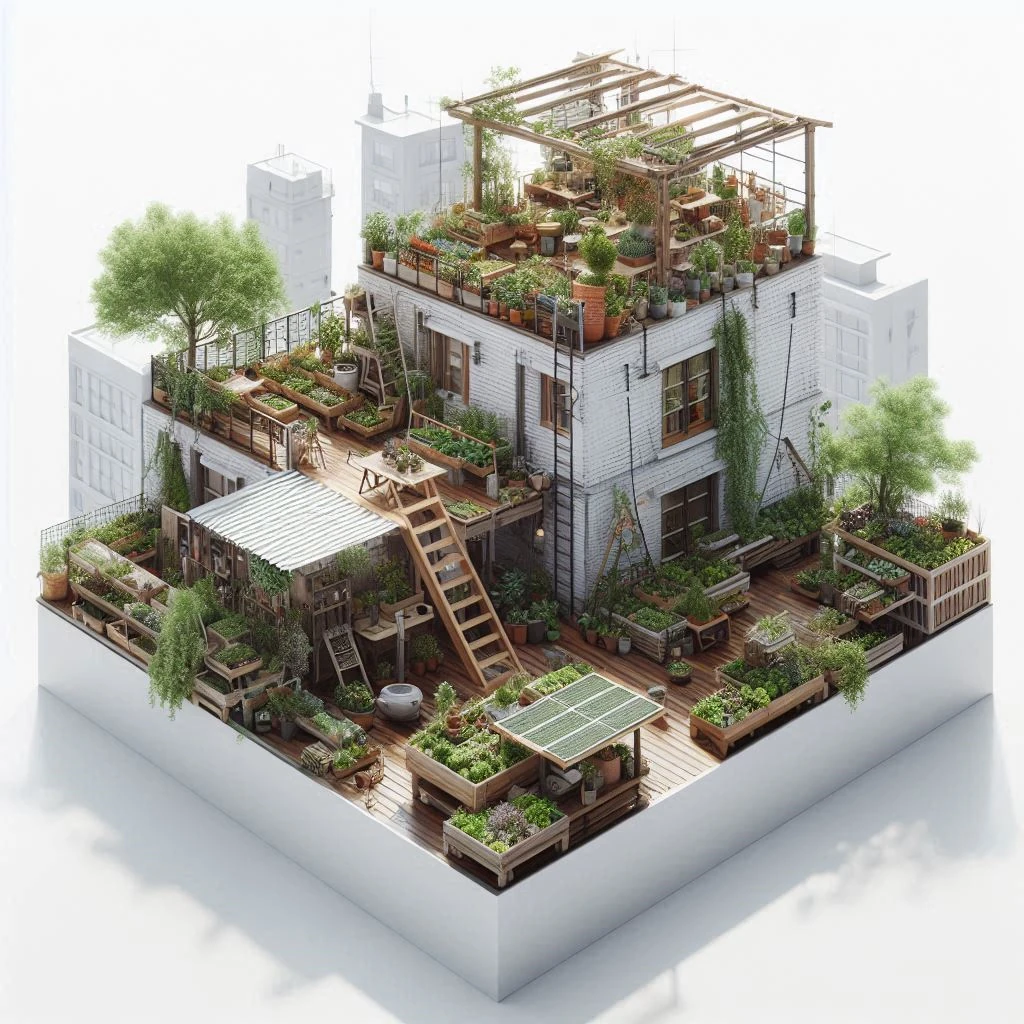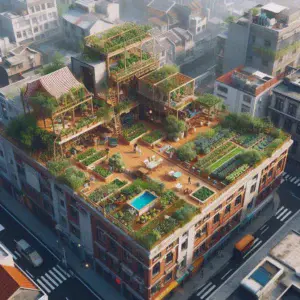Urban gardening opens up a whole new world of green possibilities right in the middle of all the hustle and bustle of city life. Even with skyscrapers towering all around it’s about making a connection with nature. Starting your garden in the city isn’t just picking pretty flowers, it’s about understanding urban gardening’s core—where sustainability meets aesthetics.
Finding the perfect spot is key. A balcony, a rooftop, a window ledge all work well as your garden’s growing space. Think about how much sunlight each option gets. Urban environments can play funny tricks with light—what seems sunny in the morning might be shaded by afternoon. If natural light’s a bit sparse, adding an LED grow light or two could make all the difference.
Consider containers. In a city soil is not as readily available, so pots and containers become essential. Pick materials that suit your environment, whether that’s lightweight plastics for balconies or more substantial ceramics if you’re working on a rooftop. Drainage is important too; nobody likes root rot from waterlogged soil.
The type of soil you choose will also make a difference. Urban gardeners often opt for a potting mix that’s lightweight yet full of nutrients. It should offer good drainage while maintaining enough moisture to keep your plants happy. It’s a bit of a balancing act, but getting it right sets you on the path for a thriving urban garden.
Growing an Urban Garden: Techniques and Strategies
Growing your garden in the middle of urban landscapes requires a creative touch and a bit of strategic thinking. Space is always at a premium, so every square inch must be maximized.
One of the best techniques for growing a garden in the city is to go vertical. This isn’t just a clever workaround; it’s a genuine opportunity to create stunning green walls that will impress, invigorate and make you proud.
Choosing plants that flourish in confined spaces also makes a big difference. Urban-friendly choices include herbs, lettuces, and small root vegetables that don’t demand much space but offer high yields. These plants not only thrive in smaller pots but also succeed when light is limited, making them big winners in the city setup.
To optimize water use, drip irrigation systems or self-watering pots come in handy. Using these methods will ensure your plants receive consistent watering, which is crucial in the usually dry urban environment. An added bonus—these systems save water, aligning perfectly with sustainable gardening goals.
Exploring and interacting with your local plant nurseries or community gardening resources can provide insight into plant varieties best suited for your area and climate. Local knowledge will often include practical tips that can make the difference between a struggling garden and a garden that grows vigorously.
These strategies are all about making the most of the city environment, turning challenges
into growing opportunities.
Maintaining Your Urban Sanctuary: Sustaining Growth and Health
Keeping your urban garden flourishing will take routine care and staying proactive. Regularly checking for signs of distress in your plants can save you a lot of trouble down the road. Yellowing leaves or droopy stems might mean your plants are either under or over-watered. Adjusting your watering schedule can help keep those greens looking lush.
Pests in the city can be as troublesome as the traffic. Tiny invaders like aphids or mites might pop up. Use an eco-friendly solution such as neem oil or insecticidal soap, they can handle these critters without harming the environment. Checking up on your plants regularly helps catch problems before they snowball.
Using fertilizers make your garden go from good to great, especially when your soil’s nutrient reserves start to dwindle. Using organic alternatives like compost or plant-based feeds enriches the soil and promotes healthy plant growth without the harsh chemicals. Mixing in some organic matter during potting can also help retain moisture and support beneficial microbes.
Watching out for the health of your plants isn’t just about spotting problems, it’s also about celebrating progress. Notice new growth? That’s a sign you’re doing something right. Celebrate those small victories, they help to power up your motivation. As your garden grows, you’ll learn more about your plants’ needs, making you a better urban gardener as time goes on.

Overcoming Urban Gardening Challenges: Solutions for City Dwellers
Urban gardening often throws a few curveballs, but they can be tackled with a bit of ingenuity. Challenged by the lack of space? Limited natural light, or the hustle of city life? All of these hurdles can be overcome with the right approach.
Space is normally the biggest challenge. With limited ground area, vertical gardening sometimes becomes a must. And it will turn your walls into vibrant green spaces. Using stackable pots and tiered planters also maximize available room and can transforms small areas into bountiful gardens.
Pollution is another concern for city gardeners. By planting hardy varieties that can withstand airborne pollutants while also acting as natural air purifiers can combat this. Look for robust plant species that can help clean the air as they beautify your space. Peace Lilies and Snake Plants in particular are noted for their air purifying abilities.
Consider the community garden. They offer a fantastic alternative for city dwellers with little or no space. These shared spaces not only allow for larger plantings but also help foster a sense of community and shared learning. They bring people together who share a common goal while pooling resources and knowledge.
Creating an urban gardening space isn’t just about finding solutions; it’s also about embracing a mindset that welcomes these challenges as chances to innovate. Whether you’re working alone or in a community plot, each small step forward brings personal satisfaction and adds a bit more green to the concrete cityscape.





